A subject that has received an intense amount of criticism in western culture—and continues to do so—is psychedelic drugs. Despite the fascinating scientific and anthropological results that have come from these substances, there continues to be an enormous lack of funding for scientific research of psychedelics. An onslaught of disinformation regarding these chemicals has hindered their research at every turn, and has made it very hard to figure out fact from fear within the subject. Heavy “War on Drugs” regulations keep people in prison for most of them, even though it is becoming increasingly undeniable that not only are each of these substances incredibly healthy and beneficial to the psyche when used responsibly, but also that addiction within any substance—let alone a shamanistic psychedelic—is propaganda. Addiction is a painfully real thing, and it happens to the best of people, but there is a difference between physical dependency on a drug, and an addiction to a substance. Addiction is a need to fill a void inside because a person feels neurologically incapable of maintaining themselves, and addictions can form from sex, working, eating, gambling, comic book collecting, romance, and realistically anything else that can successfully take an individual away from the present moment’s fullest reality. Physical dependency is when a body becomes so used to the intake of a chemical that it begins to “malfunction” due to the increasing lack of the chemical in the body. There is a fine line between medicine and maintenance, but there is a difference.
This article is NOT a guide to what drugs someone should take, but rather an informational list in an attempt to try to clear the air on the enormous array of disinformation regarding psychedelic drugs. Postmodern Shamanism is a very real thing and there are many who keep it alive within themselves and by sharing it with others, but again, this article is not about taking drugs. It is about informing people so that they can make safe decisions that are born out of empirical rationale and not cultural ignorance and “through-the-grapevine” dissertations. Despite the therapeutic and spiritual benefit of these chemicals, there is still a massive potential for abuse, as abuse comes from the individual using the substance, and replacing a natural brain response with an entheogenic chemical can only get a person so far in the long run. If any person would like to understand themselves further, meditation and putting real effort into creative art are some of the most accessible ways. However, this being said, more than a couple of drugs on this list have practically zero potential for addiction to their inherent incapacitation, duration, and intensity.
10) Cannabis
Psychoactive chemical: THC
Origins: Central Asia and India
 Marijuana is currently the most widely understood psychedelic compound to the scientific community—although this still isn’t saying much. What the amalgamation of recent studies has been able to show is that cannabinoids are a natural neurotransmitter in the brain whether or not a person has ever ingested cannabis, and that consuming any amount of “enthno-cannabinoids” for any period of time will have no long-term debilitations, primarily because this herb is not modifying any reward systems in the brain, but rather amplifying natural reward systems with the exact same functions that would normally be used. Science has found that habitual cannabis use condenses gray matter in the brain but does not damage or hinder any function whatsoever, and does in fact improve a great many things. Cannabis stimulates neurogenesis in the hippocampus, which modulates emotional response and memory; and studies have clearly shown that people with PTSD and hyper-aggressive tendencies have a markedly smaller hippocampus than the average person. The high that is given from the herb is partly due to its alteration of amygdala activity, which detects and alerts the body of outside threats, emotional or physical. Studies show that continuous cannabis use will over time reshape the amygdala and rewire its neurological responses—showing why this herb is such a significant treatment for people with chronic mental and emotional ailments, such as PTSD, anxiety, bipolar disorder, ADHD, depression, et cetera, as well as helping former addicts abstain from heavier and debilitating drugs. Overall cannabis can be said to be a gift from Mother Nature—a proven “Habit Replacement”, one could say. If someone has negative habits (often dating back to childhood) that are deeply woven into their brain and difficult to break due to the large web of habits they have weaved, then cannabis is one of the best ways to achieve a healthy state of mind and reflect on one’s life from a trustworthy state of self-reflection, instead of the waves of emotional tension that many feel to be bound to.
Marijuana is currently the most widely understood psychedelic compound to the scientific community—although this still isn’t saying much. What the amalgamation of recent studies has been able to show is that cannabinoids are a natural neurotransmitter in the brain whether or not a person has ever ingested cannabis, and that consuming any amount of “enthno-cannabinoids” for any period of time will have no long-term debilitations, primarily because this herb is not modifying any reward systems in the brain, but rather amplifying natural reward systems with the exact same functions that would normally be used. Science has found that habitual cannabis use condenses gray matter in the brain but does not damage or hinder any function whatsoever, and does in fact improve a great many things. Cannabis stimulates neurogenesis in the hippocampus, which modulates emotional response and memory; and studies have clearly shown that people with PTSD and hyper-aggressive tendencies have a markedly smaller hippocampus than the average person. The high that is given from the herb is partly due to its alteration of amygdala activity, which detects and alerts the body of outside threats, emotional or physical. Studies show that continuous cannabis use will over time reshape the amygdala and rewire its neurological responses—showing why this herb is such a significant treatment for people with chronic mental and emotional ailments, such as PTSD, anxiety, bipolar disorder, ADHD, depression, et cetera, as well as helping former addicts abstain from heavier and debilitating drugs. Overall cannabis can be said to be a gift from Mother Nature—a proven “Habit Replacement”, one could say. If someone has negative habits (often dating back to childhood) that are deeply woven into their brain and difficult to break due to the large web of habits they have weaved, then cannabis is one of the best ways to achieve a healthy state of mind and reflect on one’s life from a trustworthy state of self-reflection, instead of the waves of emotional tension that many feel to be bound to.
9) Lysergic Diethylamide Acid
Extracted from: Ergot fungus
Origins: Albert Hofman, circa 1938
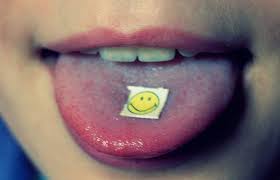 Again, saying that LSD is one of the more understood psychedelic drugs in western science is still not saying very much, but seeing as how it was synthesized by a scientist in a lab, it’s naturally a bit more documented. Originally synthesized in an attempt to isolate a bronchial dilator, LSD indeed does this and much more. Aside from the ominous Project MKULTRA—LSD experimentation done by the CIA that deals with a much darker side of psychedelics (involving trauma-induced mental programming through hypnosis achieved under the effects of LSD)—a good deal of science has started to go into this chemical’s effects on addiction and especially alcoholism. The founder of Alcoholics Anonymous has gone on record acknowledging this capability in LSD. It has also shown to be an incredibly therapeutic drug for people with PTSD and the high appears to be less volatile than psilocybin, perhaps making it more effective for the extremely neurotic folk. Speaking with loose metaphor, the therapeutic backdrop of LSD’s high seems to be an experience of the outside world through one’s own mind and perception; whereas psilocybin could be said to be an experience of one’s own mind and perception through the outside world. Of further note, LSD does not build up in the human spinal fluid, nor does any of this get released when someone cracks their back. LSD “flashbacks” are not a real thing, at least as far as scientific study has yet found. Like its root chemical structure of DMT, LSD acts as what could be called a “psycho-integrator” of the brain, functioning much like serotonin does in the brain, but instead of the regulation and restraint that serotonin brings, LSD integrates the emotional brain with the informational brain on a neurological level with no restraint whatsoever. Derived from ergot, which would cause dementia and bodily poisoning if consumed, LSD is a natural chemical—but it can hardly be considered as being given from Mother Nature. What acid is in the long run is a seriously iconic scientific mishap.
Again, saying that LSD is one of the more understood psychedelic drugs in western science is still not saying very much, but seeing as how it was synthesized by a scientist in a lab, it’s naturally a bit more documented. Originally synthesized in an attempt to isolate a bronchial dilator, LSD indeed does this and much more. Aside from the ominous Project MKULTRA—LSD experimentation done by the CIA that deals with a much darker side of psychedelics (involving trauma-induced mental programming through hypnosis achieved under the effects of LSD)—a good deal of science has started to go into this chemical’s effects on addiction and especially alcoholism. The founder of Alcoholics Anonymous has gone on record acknowledging this capability in LSD. It has also shown to be an incredibly therapeutic drug for people with PTSD and the high appears to be less volatile than psilocybin, perhaps making it more effective for the extremely neurotic folk. Speaking with loose metaphor, the therapeutic backdrop of LSD’s high seems to be an experience of the outside world through one’s own mind and perception; whereas psilocybin could be said to be an experience of one’s own mind and perception through the outside world. Of further note, LSD does not build up in the human spinal fluid, nor does any of this get released when someone cracks their back. LSD “flashbacks” are not a real thing, at least as far as scientific study has yet found. Like its root chemical structure of DMT, LSD acts as what could be called a “psycho-integrator” of the brain, functioning much like serotonin does in the brain, but instead of the regulation and restraint that serotonin brings, LSD integrates the emotional brain with the informational brain on a neurological level with no restraint whatsoever. Derived from ergot, which would cause dementia and bodily poisoning if consumed, LSD is a natural chemical—but it can hardly be considered as being given from Mother Nature. What acid is in the long run is a seriously iconic scientific mishap.
8) Psilocybin Mushrooms
Psychoactive chemical: Psilocybin
Origins: Mesoamerica/ perhaps Northern Africa
 Mushrooms are a bit more commonly understood as well, especially thanks to Terence and Dennis McKenna, two brothers who have largely laid the groundwork for postmodern ethnobotany and scientific research into a variety of psychedelics. Dennis, the surviving brother of the two, now does research with psilocybin at the HEFFTER Research Institute. Psilocybin and other psychedelic mushrooms are proven entheogens, speculated to have been used ritualistically by the Vedics, Tantrics, Pagans, and even in the early beginnings of the Catholic Church, during the Catholic-Pagan adaptation, as well as by others. As long as history can record, humans have used this chemical substance in a shamanic context. Studies have shown that psilocybin naturally lowers depression, anxiety and negative thoughts when used in the correct set and setting, which can be seen in the brain to help provide neurological foundation that could otherwise take an indeterminate length of time to create neurons for. Mushrooms are also known to be very poignant with facing personal problems, and under certain conditions are known to increase anxiety, tension, and depression during the high, but it is important to again note that this is indicative of the person consuming the substance and not the substance itself. Furthermore, when a negative state of mind arises during the psilocybin high, it has been shown that the effects of the high mentioned above still apply, and that this makes perfect therapeutic and rehabilitative conditions, allowing people to face personal problems boldly in ways they could otherwise not physically do in some cases. Aforementioned are the contrasts between LSD and psilocybin highs and therapies (since they both have the root chemical foundation of DMT), and many psychonauts have noted the deeply spiritual connection and unmistakable “sense of Other” that one receives with psilocybin, and this can oftentimes become quite surreal and intense, and research at the HEFFTER Institute has begun to link the high of psilocybin with the documentable neurologic “mystical experience” that the brain produces during a shamanic trance.
Mushrooms are a bit more commonly understood as well, especially thanks to Terence and Dennis McKenna, two brothers who have largely laid the groundwork for postmodern ethnobotany and scientific research into a variety of psychedelics. Dennis, the surviving brother of the two, now does research with psilocybin at the HEFFTER Research Institute. Psilocybin and other psychedelic mushrooms are proven entheogens, speculated to have been used ritualistically by the Vedics, Tantrics, Pagans, and even in the early beginnings of the Catholic Church, during the Catholic-Pagan adaptation, as well as by others. As long as history can record, humans have used this chemical substance in a shamanic context. Studies have shown that psilocybin naturally lowers depression, anxiety and negative thoughts when used in the correct set and setting, which can be seen in the brain to help provide neurological foundation that could otherwise take an indeterminate length of time to create neurons for. Mushrooms are also known to be very poignant with facing personal problems, and under certain conditions are known to increase anxiety, tension, and depression during the high, but it is important to again note that this is indicative of the person consuming the substance and not the substance itself. Furthermore, when a negative state of mind arises during the psilocybin high, it has been shown that the effects of the high mentioned above still apply, and that this makes perfect therapeutic and rehabilitative conditions, allowing people to face personal problems boldly in ways they could otherwise not physically do in some cases. Aforementioned are the contrasts between LSD and psilocybin highs and therapies (since they both have the root chemical foundation of DMT), and many psychonauts have noted the deeply spiritual connection and unmistakable “sense of Other” that one receives with psilocybin, and this can oftentimes become quite surreal and intense, and research at the HEFFTER Institute has begun to link the high of psilocybin with the documentable neurologic “mystical experience” that the brain produces during a shamanic trance.
7) Peyote
Psychoactive chemical: Mescaline
Origins: Mexico / southern Texas
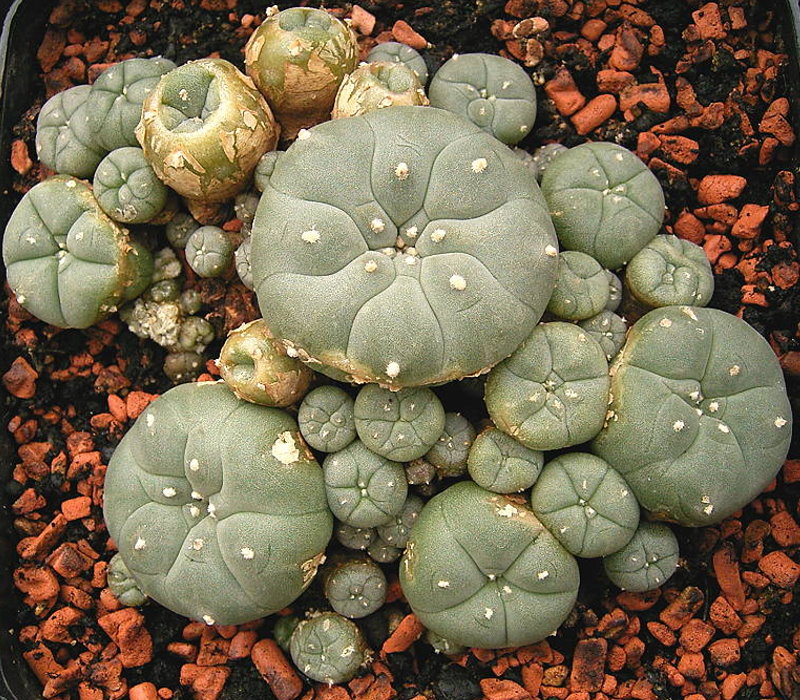 The psychoactive compound in the San Pedro cactus, mescaline, is what gives peyote its kick, and this plant is also an entheogen. A common misconception is that mescaline lasts a great deal longer than an LSD or mushroom high, but this is not the case, and in fact the three are all quite comparable on a markedly general level. Mescaline however is still said to last a bit longer than the two, however as always, the duration depends on the dosage as well. Peyote was used by many ancient North American and Mesoamerican shamans, for its traditional DMT-variant chemical structure and the naturally therapeutic properties that come with this. The reported effects seem to be coming from the realm of LSD or mushrooms, but driving into the heart of what sounds like an ibogaine experience. In addition to psychoactive use, some Native American tribes reportedly used the plant for its medicinal properties, including for things like pain in childbirth, fever, breast pain, skin diseases, and more. Ken Kesey once said that he wrote the first three pages of One Flew Over the Cuckoo’s Nest after ingesting this fascinating shamanistic cactus.
The psychoactive compound in the San Pedro cactus, mescaline, is what gives peyote its kick, and this plant is also an entheogen. A common misconception is that mescaline lasts a great deal longer than an LSD or mushroom high, but this is not the case, and in fact the three are all quite comparable on a markedly general level. Mescaline however is still said to last a bit longer than the two, however as always, the duration depends on the dosage as well. Peyote was used by many ancient North American and Mesoamerican shamans, for its traditional DMT-variant chemical structure and the naturally therapeutic properties that come with this. The reported effects seem to be coming from the realm of LSD or mushrooms, but driving into the heart of what sounds like an ibogaine experience. In addition to psychoactive use, some Native American tribes reportedly used the plant for its medicinal properties, including for things like pain in childbirth, fever, breast pain, skin diseases, and more. Ken Kesey once said that he wrote the first three pages of One Flew Over the Cuckoo’s Nest after ingesting this fascinating shamanistic cactus.
6) Ecstasy
Psychoactive chemical: MDMA
Origins: Cambodia
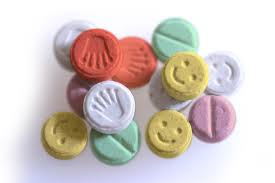 Derived from the bark of the increasingly rare Mreah Prew Phnom tree, MDMA in its natural state is an entirely healthy drug and effective medicine, and does not eat holes in your brain as some people tend to say. MDMA is not a hallucinogen, but it is still a psychedelic and can be considered the most effective socially therapeutic psychedelic, being an agonist for serotonin like many others on this list. The dangers that come from Ecstasy are the street market additives that the drugs receive, as well as the synthetic designer chemicals that are dealt out with the same name for their similar effects, but also from the accessibility of the high, making it easy to “escape” and “chase the dragon”. Due to its nature as a non-sedating, instant-acting anxiolytic, ecstasy creates an intense state of love and compassion opened up by its flood of serotonin. MDMA has proven to be a beneficial way to help people overcome their trauma from past stress (ranging from OCD to sexual abuse and beyond) due to the lucid state of the high, freedom of restrains and “emotional numbing” that serotonin regulation can help create, making this drug particularly conducive to psychotherapy. MDMA also increases the flow of oxytocin in the brain, which has been called the “bonding” chemical, as it is essential for intense, deeply connecting love in any relationship.
Derived from the bark of the increasingly rare Mreah Prew Phnom tree, MDMA in its natural state is an entirely healthy drug and effective medicine, and does not eat holes in your brain as some people tend to say. MDMA is not a hallucinogen, but it is still a psychedelic and can be considered the most effective socially therapeutic psychedelic, being an agonist for serotonin like many others on this list. The dangers that come from Ecstasy are the street market additives that the drugs receive, as well as the synthetic designer chemicals that are dealt out with the same name for their similar effects, but also from the accessibility of the high, making it easy to “escape” and “chase the dragon”. Due to its nature as a non-sedating, instant-acting anxiolytic, ecstasy creates an intense state of love and compassion opened up by its flood of serotonin. MDMA has proven to be a beneficial way to help people overcome their trauma from past stress (ranging from OCD to sexual abuse and beyond) due to the lucid state of the high, freedom of restrains and “emotional numbing” that serotonin regulation can help create, making this drug particularly conducive to psychotherapy. MDMA also increases the flow of oxytocin in the brain, which has been called the “bonding” chemical, as it is essential for intense, deeply connecting love in any relationship.
5) Salvia Divinorum
Psychoactive chemical: salvinorin A
Origins: Mesoamerica
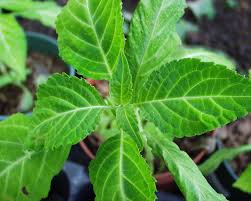 Often misunderstood for something along the lines of synthetic cannabis “spice,” salvia divinorum is actually a naturally occurring entheogen as well and was traditionally picked fresh from the plant and gummed under the lip like tobacco chaw. Used in shamanic experience by the ancient Mesoamerican people, salvia has received some clinical trials, albeit very minimal, that allude to the similar therapeutic benefits of the rest. Despite its distinction from DMT chemically, it is noted to be an intense, dreamlike experience from which it is very easy to achieve an out-of-body experience, despite the short five to fifteen minute high that it produces. It has been shown that salvia has no negative repercussions from use, but it should be noted that ppm, (parts per million) salvia divinorum is the most psychoactive plant on the planet, and should be taken with extreme caution. This does not necessarily imply that it is the “strongest high,” but rather that it is the most pharmacologically dense plant that western science has come across. Salvia also does not trigger the same traditional activity that the DMT variant psychedelic drugs produce, and it actually does most of its magic through opioid receptors in the brain. However, these are not the same neurotransmitters involved with heroin, opium, or the traditional opiates, and is non-addictive in every sense. If one were to attempt to try salvia divinorum, it is recommended to grow it fresh oneself, as it is completely legal in the U.S. as well as most places, and reportedly easy to cultivate. When Terence McKenna died, he had an entire garden full of salvia divinorum plants behind his house and remained a strong advocate for the plant’s medicinal value.
Often misunderstood for something along the lines of synthetic cannabis “spice,” salvia divinorum is actually a naturally occurring entheogen as well and was traditionally picked fresh from the plant and gummed under the lip like tobacco chaw. Used in shamanic experience by the ancient Mesoamerican people, salvia has received some clinical trials, albeit very minimal, that allude to the similar therapeutic benefits of the rest. Despite its distinction from DMT chemically, it is noted to be an intense, dreamlike experience from which it is very easy to achieve an out-of-body experience, despite the short five to fifteen minute high that it produces. It has been shown that salvia has no negative repercussions from use, but it should be noted that ppm, (parts per million) salvia divinorum is the most psychoactive plant on the planet, and should be taken with extreme caution. This does not necessarily imply that it is the “strongest high,” but rather that it is the most pharmacologically dense plant that western science has come across. Salvia also does not trigger the same traditional activity that the DMT variant psychedelic drugs produce, and it actually does most of its magic through opioid receptors in the brain. However, these are not the same neurotransmitters involved with heroin, opium, or the traditional opiates, and is non-addictive in every sense. If one were to attempt to try salvia divinorum, it is recommended to grow it fresh oneself, as it is completely legal in the U.S. as well as most places, and reportedly easy to cultivate. When Terence McKenna died, he had an entire garden full of salvia divinorum plants behind his house and remained a strong advocate for the plant’s medicinal value.
4) Iboga
Psychoactive chemical: Ibogaine
Origins: Africa
 This largely unknown entheogen’s tree bark is not only at the heart of ancient African shamanism and witchcraft, but also at the heart of many postmodern addicts’ salvation. Clinical studies have now been able to undoubtedly reproduce a guaranteed interruption in opiate dependency—physically and psychologically. Although still highly illegal in many places including the US, rehabilitation clinics have opened up all across the world, offering treatment that is proven to be effective by isolating the psychoactive proponent “ibogaine” from the rest of the plant’s alkaloids. As with any psychoactive concentrate, it should be taken into consideration that ibogaine treatment is a serious kick to the ass, and is every way as intense, encompassing, and therapeutic as Ayahuasca. Some even speculate it to be more so—at least in the sense of self-reflection. Those who have compared experiences of the two plants, as well as the shamanism culture and philosophy that they have both created, point out that while ayahuasca seems to be a sojourn to “higher dimensions” of information and cognitive experience, iboga can be seen as the plant that digs to the roots of a person’s very core without pause, and is brutally, brutally honest in every way. Shamanist philosophy of the plant says that it tunes a person’s mind into the quintessential essence of things—and in terms of people, this means their soul, including the drugged person’s own soul, the soul of the people the drugged person might be around, or even the souls of the person that the drugged person is thinking about, as the legends go. If each of these plants had a human archetype, iboga would be one of the eldest, wisest parents of the psychedelic medicines and is something that should be left to the seriously inquisitive or to those without other options.
This largely unknown entheogen’s tree bark is not only at the heart of ancient African shamanism and witchcraft, but also at the heart of many postmodern addicts’ salvation. Clinical studies have now been able to undoubtedly reproduce a guaranteed interruption in opiate dependency—physically and psychologically. Although still highly illegal in many places including the US, rehabilitation clinics have opened up all across the world, offering treatment that is proven to be effective by isolating the psychoactive proponent “ibogaine” from the rest of the plant’s alkaloids. As with any psychoactive concentrate, it should be taken into consideration that ibogaine treatment is a serious kick to the ass, and is every way as intense, encompassing, and therapeutic as Ayahuasca. Some even speculate it to be more so—at least in the sense of self-reflection. Those who have compared experiences of the two plants, as well as the shamanism culture and philosophy that they have both created, point out that while ayahuasca seems to be a sojourn to “higher dimensions” of information and cognitive experience, iboga can be seen as the plant that digs to the roots of a person’s very core without pause, and is brutally, brutally honest in every way. Shamanist philosophy of the plant says that it tunes a person’s mind into the quintessential essence of things—and in terms of people, this means their soul, including the drugged person’s own soul, the soul of the people the drugged person might be around, or even the souls of the person that the drugged person is thinking about, as the legends go. If each of these plants had a human archetype, iboga would be one of the eldest, wisest parents of the psychedelic medicines and is something that should be left to the seriously inquisitive or to those without other options.
3) Opium
Psychoactive chemicals: morphine/ codeine/ thebaine
Origins: Probably Southern Europe
 Mistakenly always compared to heroin, it is seriously important to differentiate a natural source from a concentrate. A natural source, such as an entire plant’s leaf, seed, or fruit, et cetera, is a specific balance of thousands of different chemicals that Nature has given to this “drug” that one can consume. When people begin isolating specific chemicals into concentrated oils or salts, one no longer has any sort of consideration to Mother Nature’s Golden Ratio of growth, and thus has the potential to be stepping into murky territory, as with heroin. Indeed for thousands of years, dating back to Ancient China, it was said that when used respectfully and responsibly, opium could be used to speak to the Gods in one’s dreams; it was also said to induce precognitive dreams, astral travel, divination or what people now call “synchronicity” events, and throughout history has been considered an irreplaceable treasure to shamanism. Scientifically speaking, the reason opium can be so addictive and physical dependent is simply the nature of the drug in relation to a human’s endogenous receptors, and ultimately of the decisions of the individual. It should be reiterated that “physical dependency” is different from “addiction,” and that addiction is a mental quality within a person that can be demonstrated with any thing at all, including any drug. Dependency issues aside, because it is derived from a natural plant and simply boosting natural reward systems in the brain, there are no debilitating ramifications or brain damages that come from consuming opium, and the “dirtiness” that is associated with opiates and heroin is really only because of the black market distribution of the drug and the “cutting” of its substance with other substances. The Ancient Chinese fought wars over opium, and since the drug is naturally triggering endorphin receptors in the brain, (which is exactly what “runner’s high” is) and since endorphins are large components of love and emotional connection, this plant really can be seen as a kiss from Mother Nature in a sense. But, as every smart person has learned, love is a sharp and double-edged sword.
Mistakenly always compared to heroin, it is seriously important to differentiate a natural source from a concentrate. A natural source, such as an entire plant’s leaf, seed, or fruit, et cetera, is a specific balance of thousands of different chemicals that Nature has given to this “drug” that one can consume. When people begin isolating specific chemicals into concentrated oils or salts, one no longer has any sort of consideration to Mother Nature’s Golden Ratio of growth, and thus has the potential to be stepping into murky territory, as with heroin. Indeed for thousands of years, dating back to Ancient China, it was said that when used respectfully and responsibly, opium could be used to speak to the Gods in one’s dreams; it was also said to induce precognitive dreams, astral travel, divination or what people now call “synchronicity” events, and throughout history has been considered an irreplaceable treasure to shamanism. Scientifically speaking, the reason opium can be so addictive and physical dependent is simply the nature of the drug in relation to a human’s endogenous receptors, and ultimately of the decisions of the individual. It should be reiterated that “physical dependency” is different from “addiction,” and that addiction is a mental quality within a person that can be demonstrated with any thing at all, including any drug. Dependency issues aside, because it is derived from a natural plant and simply boosting natural reward systems in the brain, there are no debilitating ramifications or brain damages that come from consuming opium, and the “dirtiness” that is associated with opiates and heroin is really only because of the black market distribution of the drug and the “cutting” of its substance with other substances. The Ancient Chinese fought wars over opium, and since the drug is naturally triggering endorphin receptors in the brain, (which is exactly what “runner’s high” is) and since endorphins are large components of love and emotional connection, this plant really can be seen as a kiss from Mother Nature in a sense. But, as every smart person has learned, love is a sharp and double-edged sword.
2) Ayahuasca
Psychoactive chemical: dimethyltryptamine
Origins: Amazonian Peru
 Despite its growing counter-culture in the western world, it can be argued that ayahuasca is still one of the most misunderstood substances on this list, although not pharmacologically. Many people have heard of this Amazonian tea’s intense spiritual ramifications, and more are beginning to hear about its physically rehabilitative properties as well with heroin and dependencies in general. Because all chemical signs of life on the planet involve the chemical structure of DMT, it is metabolized quite easily by the human stomach, and so an MAOI (monoamine oxidase inhibitor) in the form of a vine is brewed with the chacruna shrub to create the psychoactive tea. The effects are intensely cleansing, and nausea, vomiting, sweating and other forms of sickness are common during the come-up and throughout at times. Scientists know that mescaline, LSD, and psilocybin all contain root chemical components of DMT. Traditionally said to enhance psychic ability into the realms of precognition, clairvoyance, astral travel and beyond, the thing that makes this different from all other herbs or plants that produce these dreamlike effects is that this is while you are incredibly, lucidly awake. The comparison is not metaphorical either, as it has been shown in rats that DMT is produced in the pineal gland, and although studies have not been allowed yet, it can be assumed that this is the case in all mammals, including humans. DMT has also been coined by many as the “spirit” or “dream” molecule, saying that it is a transportation of consciousness much akin to dreaming and even dying, and indeed the hormonal process that DMT is used for in the brain is shown to be linked to REM sleeping, and is speculated to be a component in dreaming. With people claiming to experience contact with a range of entities from extra-terrestrials, Gods, spirits, Jungian archetypes (which could perhaps be an explanation for all of the entities) and the like, this can be certainly said to be a chemical of transportation more so than any other, and out-of-body experiences involving long, intense, shamanic trances are common on this brew. The most common entity met while under its influence is a nurturing woman, said by many to be the Mother Nature archetype represented by religious icons, and she has been dubbed Mother Ayahuasca. Ultimately, it should be noted that the Mother’s offer is not a super-groovy, six-hour lucid dream but a deeply intense, edge-of-your-seat, metaphysical ride that will give the consumer a run for all of their money if one is not careful.
Despite its growing counter-culture in the western world, it can be argued that ayahuasca is still one of the most misunderstood substances on this list, although not pharmacologically. Many people have heard of this Amazonian tea’s intense spiritual ramifications, and more are beginning to hear about its physically rehabilitative properties as well with heroin and dependencies in general. Because all chemical signs of life on the planet involve the chemical structure of DMT, it is metabolized quite easily by the human stomach, and so an MAOI (monoamine oxidase inhibitor) in the form of a vine is brewed with the chacruna shrub to create the psychoactive tea. The effects are intensely cleansing, and nausea, vomiting, sweating and other forms of sickness are common during the come-up and throughout at times. Scientists know that mescaline, LSD, and psilocybin all contain root chemical components of DMT. Traditionally said to enhance psychic ability into the realms of precognition, clairvoyance, astral travel and beyond, the thing that makes this different from all other herbs or plants that produce these dreamlike effects is that this is while you are incredibly, lucidly awake. The comparison is not metaphorical either, as it has been shown in rats that DMT is produced in the pineal gland, and although studies have not been allowed yet, it can be assumed that this is the case in all mammals, including humans. DMT has also been coined by many as the “spirit” or “dream” molecule, saying that it is a transportation of consciousness much akin to dreaming and even dying, and indeed the hormonal process that DMT is used for in the brain is shown to be linked to REM sleeping, and is speculated to be a component in dreaming. With people claiming to experience contact with a range of entities from extra-terrestrials, Gods, spirits, Jungian archetypes (which could perhaps be an explanation for all of the entities) and the like, this can be certainly said to be a chemical of transportation more so than any other, and out-of-body experiences involving long, intense, shamanic trances are common on this brew. The most common entity met while under its influence is a nurturing woman, said by many to be the Mother Nature archetype represented by religious icons, and she has been dubbed Mother Ayahuasca. Ultimately, it should be noted that the Mother’s offer is not a super-groovy, six-hour lucid dream but a deeply intense, edge-of-your-seat, metaphysical ride that will give the consumer a run for all of their money if one is not careful.
1) DMT
Extracted from: a variety of plants like chacrona shrub, mimosa tree bark, and tons more
Origins: Richard Manske, circa 1931
 The reason this extract has been added to the list along with its traditional form is due to the culture that has adopted it. In this western culture, DMT itself has developed on a fine line between a recreational escape and a spiritual sacrament. Rarely however is DMT extract used in physically therapeutic ways due to its notably shorter duration and the fact that it is usually smoked as salt on top of an herb, which has a very different process on the body than a carefully brewed aborigine tea. Lasting usually for a period of roughly fifteen or twenty minutes, the abruptness of the intensity can often be an uncomfortable ride akin to salvia if one is not prepared, and has effects much the same as ayahuasca without the elaborated effects with the expanded time. DMT Extract seems to offer a bit less of an introspective, psychic experience and more so an abrupt and deeply spiritual, metaphysical experience, which guarantees a dramatic jostling from the everyday western routine. Dr. Rick Strassman and his clinical studies done on DMT are some definitive sources as to the nature of the drug’s effects.
The reason this extract has been added to the list along with its traditional form is due to the culture that has adopted it. In this western culture, DMT itself has developed on a fine line between a recreational escape and a spiritual sacrament. Rarely however is DMT extract used in physically therapeutic ways due to its notably shorter duration and the fact that it is usually smoked as salt on top of an herb, which has a very different process on the body than a carefully brewed aborigine tea. Lasting usually for a period of roughly fifteen or twenty minutes, the abruptness of the intensity can often be an uncomfortable ride akin to salvia if one is not prepared, and has effects much the same as ayahuasca without the elaborated effects with the expanded time. DMT Extract seems to offer a bit less of an introspective, psychic experience and more so an abrupt and deeply spiritual, metaphysical experience, which guarantees a dramatic jostling from the everyday western routine. Dr. Rick Strassman and his clinical studies done on DMT are some definitive sources as to the nature of the drug’s effects.
The final disclaimers are simple: everything in moderation, and both timing and intention are absolutely crucial. It is believed that if one uses psychedelics in an unhealthy and unproductive way, that they are more inclined to knock someone off of their spiritual path more so than help them find it, and this is something that far too many individuals forget. The only thing that is going to get these medicines more funding and cultural integration is the people getting a better foundational understanding of them, and so hopefully this helps.

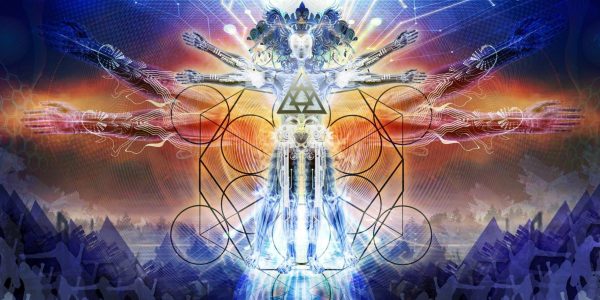

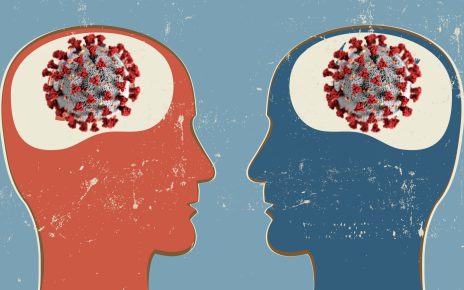

Each Of the drugs is pretty crazy on how the affect to human body. The iboga plant can be used to heal/cure someone from the other drugs.